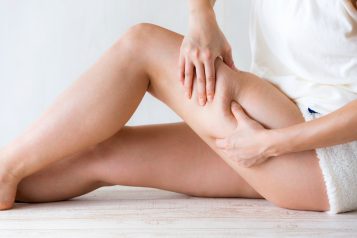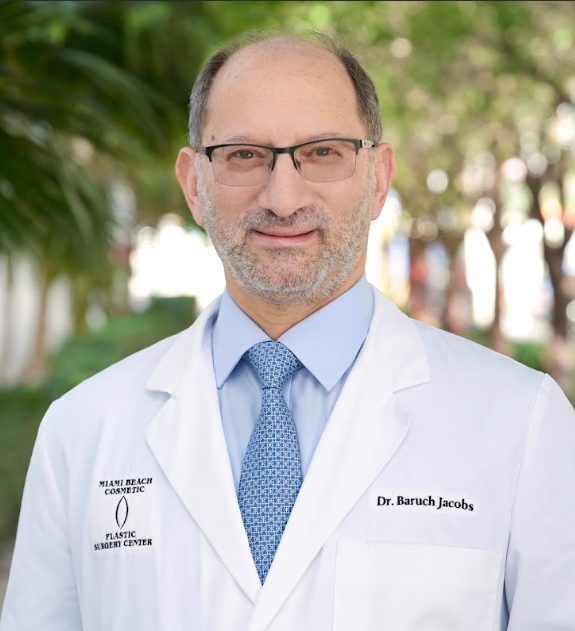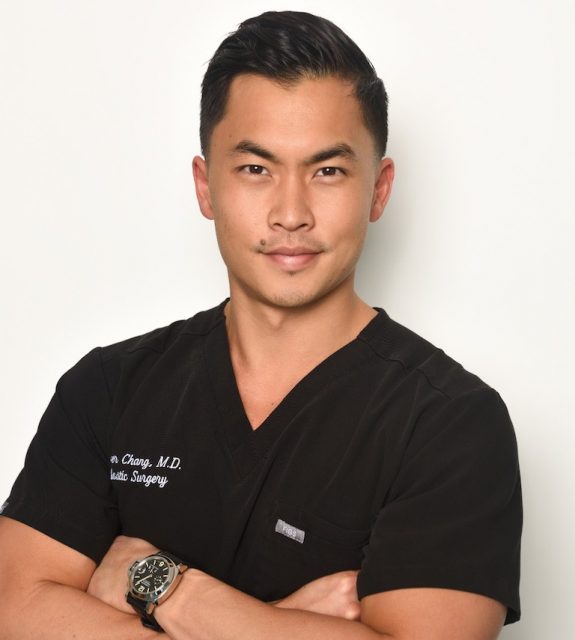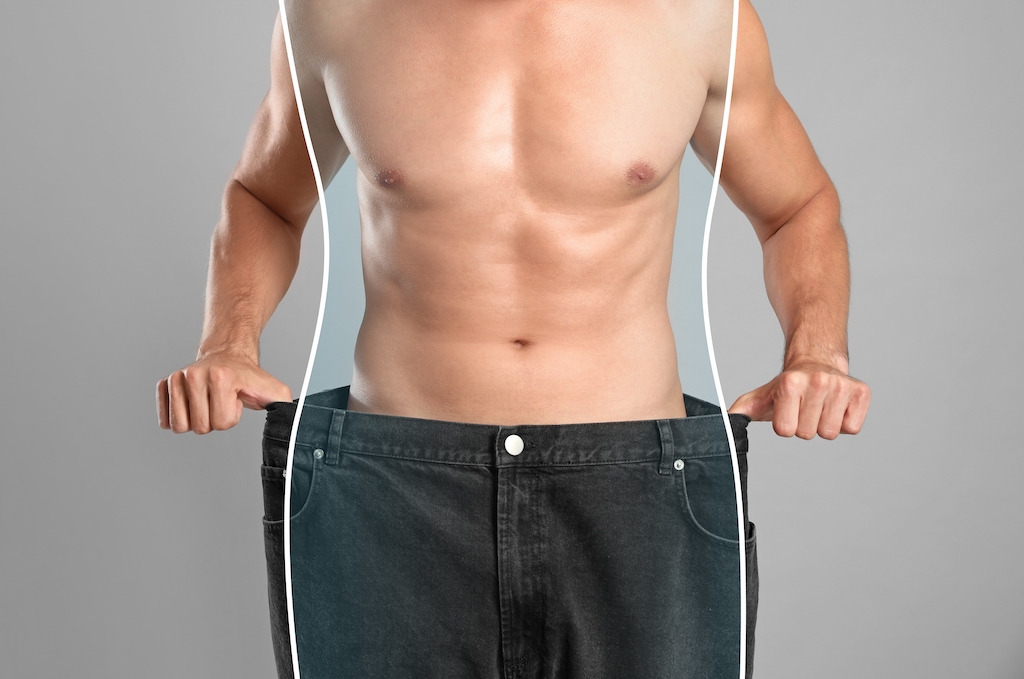 Photo Credit: ShutterstockDid you know that plastic surgery is not just for men? In fact, men are getting in on the action too. According to the American Society of Plastic Surgery (ASPS), in 2020 alone, over 289,000 procedures were done on men. And that is not all! There were also more than 820,000 minimally invasive procedures, like Botox and laser treatments, that same year. So, what are the most popular procedures for men, you ask? Haute Beauty expert Dr. S. Alexander Earle reviews the four hautest surgeries for men: liposuction, rhinoplasty, abdominoplasty, and blepharoplasty.
Photo Credit: ShutterstockDid you know that plastic surgery is not just for men? In fact, men are getting in on the action too. According to the American Society of Plastic Surgery (ASPS), in 2020 alone, over 289,000 procedures were done on men. And that is not all! There were also more than 820,000 minimally invasive procedures, like Botox and laser treatments, that same year. So, what are the most popular procedures for men, you ask? Haute Beauty expert Dr. S. Alexander Earle reviews the four hautest surgeries for men: liposuction, rhinoplasty, abdominoplasty, and blepharoplasty.
1. Liposuction
The most popular procedure requested by men at PURE is liposuction, also known as lipoplasty or body contouring. This surgical procedure permanently removes fat cells from specific areas of the body to help reshape and create a more contoured silhouette. Areas commonly contoured for men with liposuction include hips, thighs, knees, buttocks, abdomen, under the chin, neck, cheeks, and upper arms.
What are the four types of liposuction procedures?
An Ultrasound-assisted liposuction (UAL) surgery turns fat cells into a liquid using ultrasonic vibrations. Once the cells are liquified they are vacuumed out of the body with either a heated cannula below the skin’s surface or by using an emitter above the surface of the skin.
Tumescent liposuction (fluid injection) requires the surgeon to inject a medicated solution of anesthetic and a salt solution into the areas in need of fat removal. It is the most common type of liposuction and can take the longest.
The super-wet technique is similar to tumescent liposuction; however, it does not use as much fluid. This technique does not take as much time as Tumescent liposuction and the amount of fluid that is injected is equal to the amount of fat that will be removed from the site. This procedure may require sedation or general anesthesia.
During laser-assisted liposuction (LAL) a laser is used to liquify the fat cells, which are then vacuumed out or drained through small tubes. This procedure uses a small cannula and is often performed on smaller areas on the face, such as the chin and cheek areas.
Abdominal Etching and Liposuction for Men
Many of our male patients opt for ab etching as a part of their liposuction procedure. Often these patients find that even with a healthy diet and rigorous exercise, they are unable to achieve abdominal definition.
Who is a good candidate for liposuction?
The best male candidates for liposuction are patients already at or near their ideal weight with positive eating habits and exercise routines. During consultations, we ask patients to avoid significant weight gain post-surgery to maintain optimal results and avoid additional rounds.
2. Rhinoplasty
Rhinoplasty surgery, commonly called a “nose job” is performed to change the appearance of the nose and can also be done to improve breathing or other nasal complications. For some, a nose job is purely for cosmetic purposes, and for others it can be sought to improve nasal issues, correct birth defects, or repair injuries. Rhinoplasty can target cartilage in the lower portion of the nose and bone in the upper area, and it can also change the skin on the nose. Each surgery is unique and customized to meet the goals of the patient while taking into consideration the shape of the face and often ethnicity.
What is ethnic rhinoplasty?
Patients of non-Caucasian descent may request an ethnic rhinoplasty, which is nasal surgery that changes the nose while preserving cultural features. As with all rhinoplasties, no two surgeries are the same, including those of the same ethnic groups. However, we’ve found that aesthetic preferences are often shared by patients of the same ethnicity, and we take that into consideration when we perform an African-American rhinoplasty, a Hispanic rhinoplasty, Middle East rhinoplasty or Asian rhinoplasty.
What parts of the nose can you change during a rhinoplasty?
- Redefining a dorsal hump – creating a straight nasal bridge or a curved nasal bridge.
- Narrowing the nasal bridge – the nasal bridge is narrowed to improve improved nasal-facial balance.
- Raising the nose ridge – gives height to a “flat” nose.
- Narrowing the nostrils – for large or faired nostrils we decrease the base of the nose.
- Resolving nasal breathing issues – enhance breathing by correcting a deviated septum and other nasal issues.
- Enhancing the nasal tip – used to improve nasal tip projection.
How old do you have to be to have a rhinoplasty?
Rhinoplasty surgery is the most requested surgery for teenagers, and we see all ages for consultations. However, at PURE we accept patients 16 years of age and older because that’s when the nose is fully formed. There are exceptions to the rule, including repairing an injury or breathing issues and we will work with your primary care doctor to determine eligibility. If the procedure is done on patients when they are too young, it could negatively impact the development of the nose and cause further complications.
Another reason we prefer patients 16 years of age or older is their maturity to be patient with recovery, which can take up to a year. For young, active patients it may be difficult to avoid activities that can cause severe issues for one-month post-op. These are some of the activities to avoid 30 days after rhinoplasty surgery:
- Blowing your nose
- Sun exposure
- Putting clothes on over your head
- Sports (Running, Swimming, Weightlifting, Basketball, Football, Cycling, Rugby, etc.)
- Aggressive toothbrushing
- Smiling and laughing
- Wearing glasses on the nose
While there is a lower age requirement, there is no age limit for rhinoplasty after the age of 16 years old. Recovery may be more difficult for patients over 50 years of age, and this is something to consider when determining if rhinoplasty surgery is right for you.
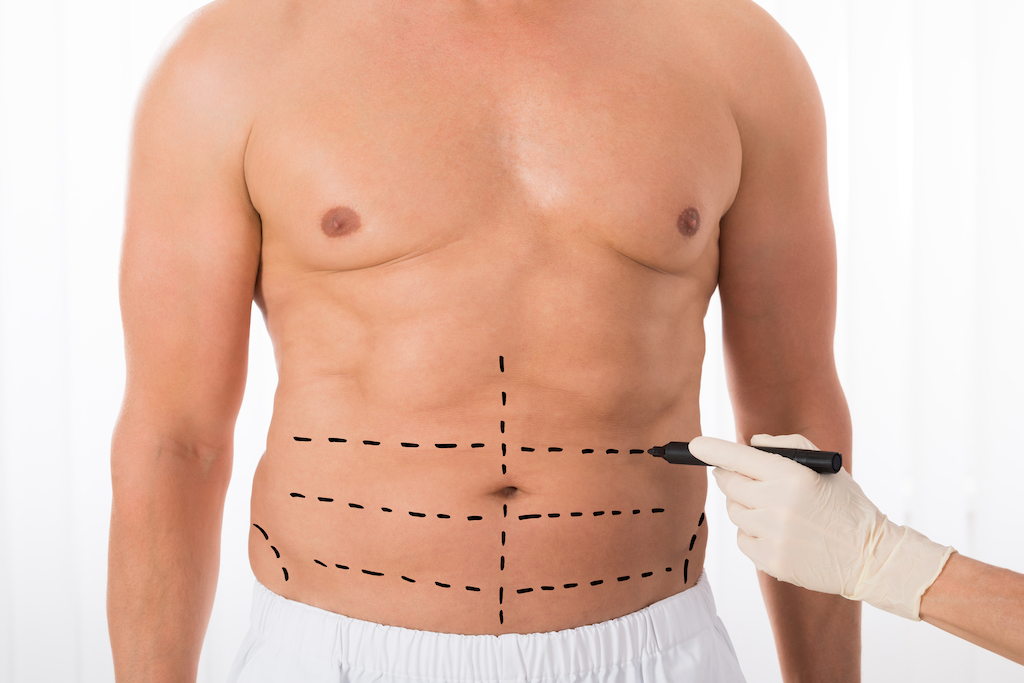 Photo Credit: Shutterstock
Photo Credit: Shutterstock
3. Abdominoplasty
An abdominoplasty also known as a tummy tuck is a surgical procedure that can tighten the abdominal wall, and remove loose skin and fat on the abdomen. Each patient will decide which tummy tuck procedure will help them achieve their body goals.
After aging or significant weight loss, some men find it difficult to choose between a full and a mini tummy tuck. Both procedures can offer results that are sometimes unachievable through exercise alone.
Mini Tummy Tuck
A mini or partial tummy tuck is the less invasive of the two options and is often paired with abdominal liposuction. This procedure works best for men who only have excess loose skin below the belly button. For those who have loose skin and stretch marks above the belly button, this may not be the right tummy tuck procedure as it will not correct that area. The recovery time for the mini tuck is shorter than a full tummy tuck.
Mini tummy tuck procedures are best if you:
- Are in good health
- Most have skin issues in the lower abdominal area
- Have good muscle tone/definition
- Are at your ideal weight/BMI
- Want a shorter scar
- Have a small or insignificant space between rectus muscles (diastasis recti)
Full Tummy Tuck
For men who have significant abdominal wall damage, loose skin, excess fat, and stretch marks above the belly button, a full tummy tuck may be the most suitable option. A full tummy tuck surgery involves tightening the abdominal muscles, removing excess skin and fat, and performing liposuction to the flank areas. The procedure may also involve repairing the belly button, which may require repositioning and total reconstruction. The end result is a more defined and contoured appearance.
It is important to note that the recovery time for a full tummy tuck is longer than that of a mini tummy tuck, and the size of the scar may vary depending on the amount of excess fat and skin removed during the surgery. It is also worth mentioning that results from surgery may vary, and patients are advised to adhere strictly to aftercare instructions provided by the surgeon. It is also recommended to avoid significant weight gain as this could alter the outcome of the surgery.
Full tummy tuck procedures are best if you:
- Are in good health
- Have skin issues in the upper and lower abdominal area
- Have damaged abdominal muscles
- Have significant space between rectus muscles (diastasis recti)
- Have fat deposits around the abdomen
4. Blepharoplasty
As men age, some notice changes to their face that may make them appear older or more tired. The eye area is one of the first places that show signs of aging. During the aging process, the skin around the upper and lower eyes may lose elasticity and begin to sag. When there is excess skin on the upper eyelids, it can hang over the eye area and lashes obstructing vision and causing the upper lids to feel heavy. If there is excess skin on the lower eyelids, it can create wrinkles and deep lines in the skin.
If you notice the skin around the eyes is bulging or looks like the lids are retaining fluid, it could be the result of weakened membranes – that hold fat in place from the skull – allowing fat to move forward into the lids causing bulging.
What is Blepharoplasty?
Blepharoplasty is the medical term for eyelid surgery or an eyelift. It can be performed on either the upper or lower eyelids, and in some patients, both the upper and lower lids. The procedure removes excess skin and reduces bagginess around the eyes. While this surgery is mostly done for cosmetic reasons, it can be ordered by an ophthalmologist for patients whose sagging or bulging upper eyelids are impairing their vision. A Blepharoplasty can be performed alone or with laser resurfacing, forehead lifts, filler injections, such as BOTOX®, and various facelift procedures.
You may be a good candidate for blepharoplasty if…
- You are in good health and are 35 years or older
- You are over 18 and under 35 years old and droopy or saggy eyelids run in your family
- The skin on your upper and/or lower lids is sagging and obstructing vision or causing the eyes to feel heavy
- Your eyelids look like they are retaining fluid or have a buildup of fat deposits
- You have tried topical solutions, lasers, or injections that have not worked
- You have a realistic idea of Blepharoplasty outcomes
- You can take off work and refrain from strenuous activities including driving, for several days
Are you awake during blepharoplasty?
For a Blepharoplasty you will likely be under local anesthesia consisting of oral sedation and a numbing medication injected around the eye area. You may receive IV sedation if your eyelift procedure is performed at a surgical center or a hospital.
Is blepharoplasty a major surgery?
Blepharoplasty is a surgical procedure that can take up to two (2) hours for both the upper and lower eyelids. After surgery you will not be able to drive – someone will need to accompany you home and stay with you for at least one (1) night after surgery. Most patients stay home from work and perform limited activities for one (1) week after surgery.
How long does it take to recover from blepharoplasty?
After a few days, most patients can resume normal activity, including driving. The eyes may be sensitive after surgery, and avoiding the sun and UV exposure is best until the incisions have completely healed. If you have stitches placed in your eyelids, they will stay in place for up to one (1) week. For up to two (2) weeks, patients may experience dry eyes, which is completely normal. If symptoms of dry eyes last longer than two (2) weeks, please contact your surgeon right away. Your eyelids should look normal after four (4) to six (6) weeks as the swelling subsides.
How painful is blepharoplasty?
Pain from eyelift surgery is mild to moderate and for many patients, the pain peaks a few hours after surgery. Bruising, swelling, and blurred vision are normal and can cause discomfort after surgery, however, recovery is fast, and results are noticed immediately after the procedure. To manage pain after eyelid surgery, your doctor may recommend over-the-counter painkillers or prescription pain management. For some patients, putting ice packs or bags of frozen peas on the eyes will help with pain and swelling.
How long do blepharoplasty results last?
A lift to the upper eyelids may last for five (5) to ten (10) years, and lower eyelids can last indefinitely depending on your age and skin elasticity. It is possible for eyelids to sag again due to the natural process of aging, if this occurs, you can consider another eyelift or consult with your doctor to see if another procedure, such as a forehead or facelift is right for you.
Will health insurance cover blepharoplasty surgery?
For those undergoing an eyelift procedure for a medical reason, your insurance may cover the cost. Check with your eyecare physician and insurance company to determine what costs, if any, will be covered by your insurance.
What are some of the complications of blepharoplasty surgery?
There are risks for every surgery and although eyelift surgery complications are rare, they do occur and can include the following:
- Infection
- Loss of vision
- Difficulty closing your eyes
- Bleeding
- Dry eyes
- Eyelid discoloration
- Folding or creasing eyelid skin
If you experience any of the above complications, please contact your surgeon right away.
For more information, visit Dr. S. Alexander Earle's social media:








